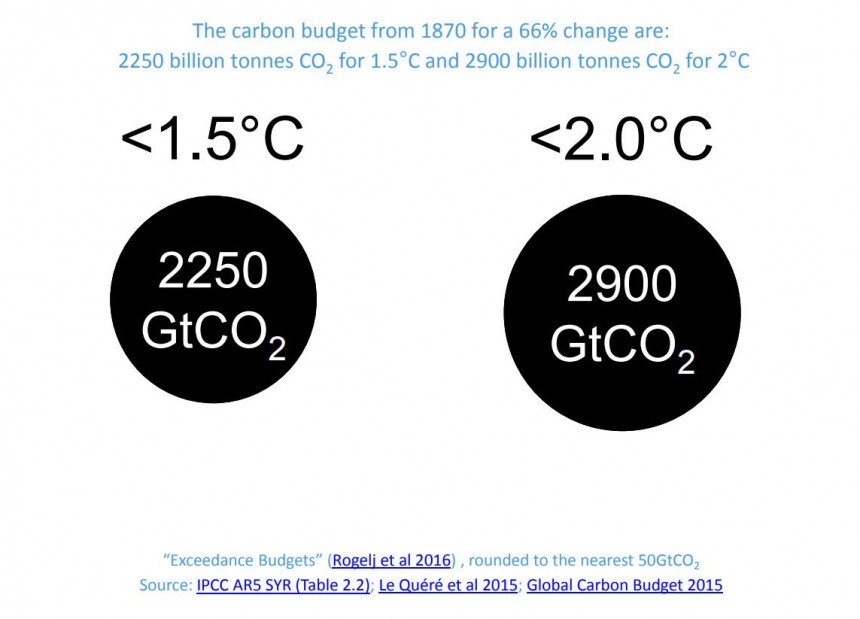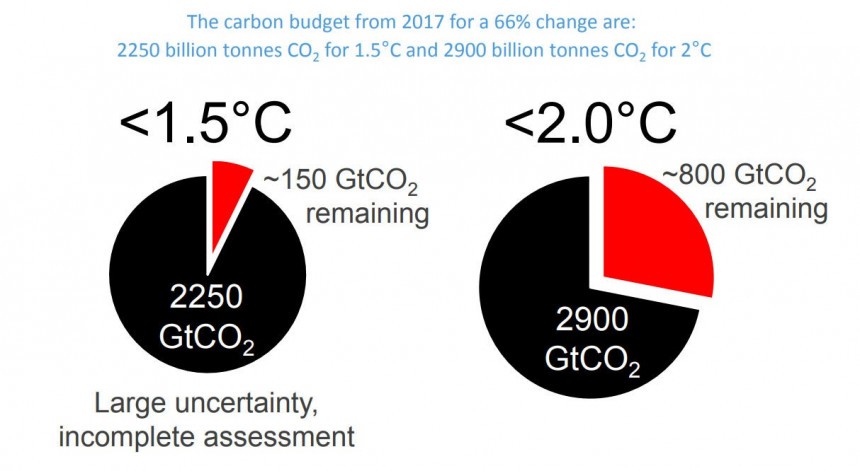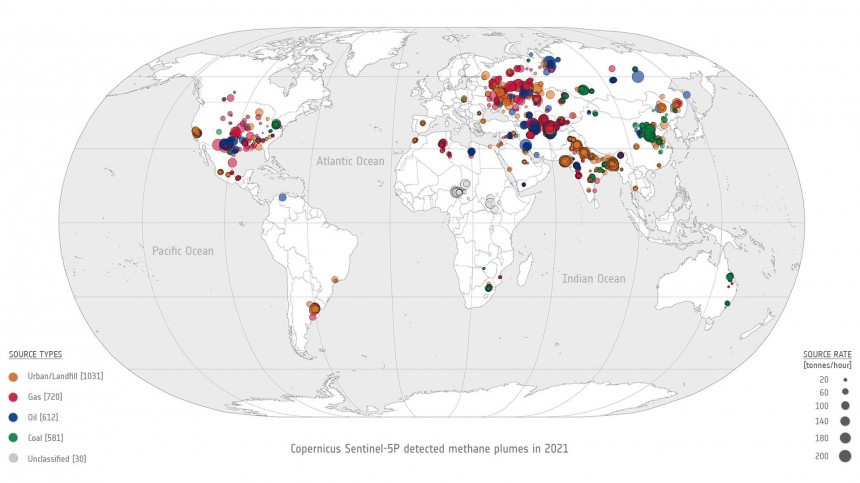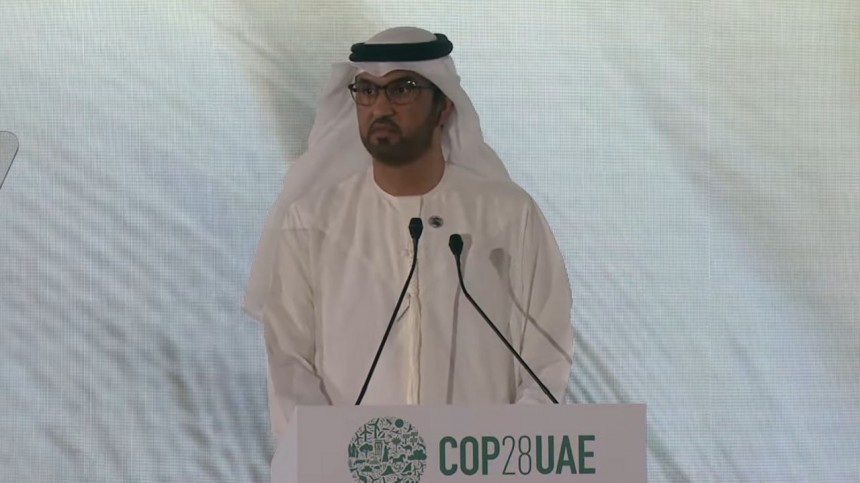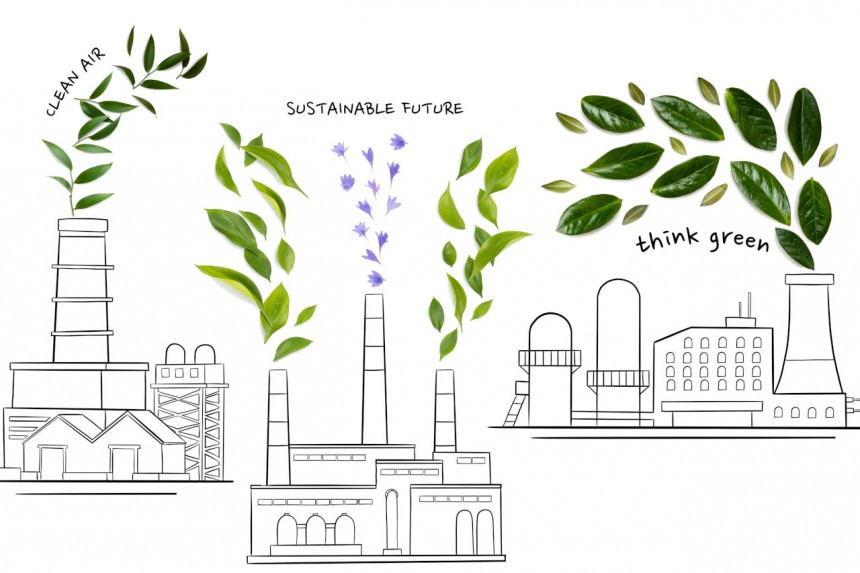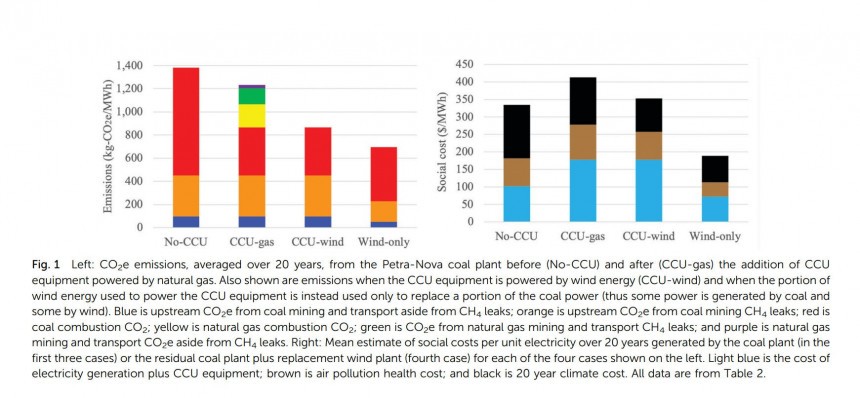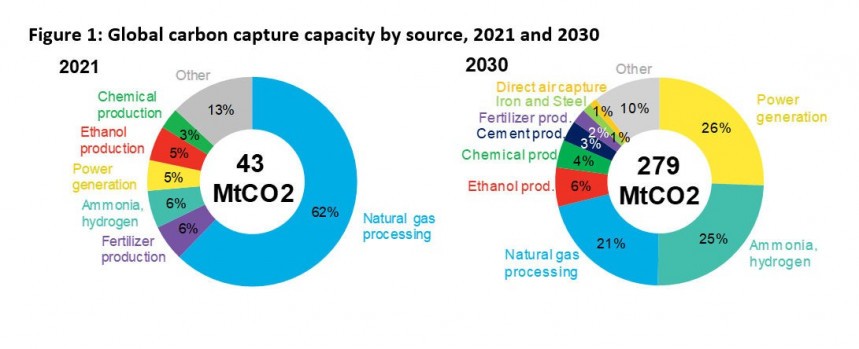What does it sound like when you put in charge of a global climate summit someone who runs one of the biggest oil and gas companies in the world and who inconceivably asserts that "there is no science out there, or no scenario, that says that the phase-out of fossil fuel is what's going to achieve 1.5C"? If your answer is "a wolf in sheep's clothing," then you're wrong. It's much worse than that.
I once compared petrolheads to smokers, but comparing all humankind to smokers would be nothing but a huge mistake. The truth is that modern human society is nowadays more like a drug addict. The economy, industry, social order, and our way of life are based on the heavy use of coal, oil, and natural gas.
But, like in the case of a drug addict, simply stopping using heroin would result in a shock, often a fatal one. And this is what oil and gas representatives base their assertion on – the fear of "going back to caves."
Consequently, greenwashing has reached new levels, and I acknowledge that fossil fuel propaganda is genuinely innovative. Paraphrasing Orwell's famous quote from "1984" novel: "He who controls thepast fossil fuels controls the future money; he who controls the present information controls the past world."
Experts at the Global Carbon Project have the best tool for simple people like you and me to understand how CO2 emissions impact the rise of average global temperature: the "carbon budget." What is it?
It estimates how much GtCO2 can be released into the atmosphere until the average global temperature rises by 1.5°C or 2°C or any other value above pre-industrial levels. Of course, estimations go hand in hand with a certain probability that the world would take necessary action based on scientific data. Right, I guess they didn't know about the post-truth back in 2015…
Relative to 1870, the carbon budget to limit global warming by 1.5°C was estimated to be a total of 2,250 GtCO2, while the carbon budget for 2°C was more generous at 2,900 GtCO2. These values were estimated with an optimistic-realistic probability of 66%. Which means there are 2:1 odds for the experts to be right about it.
Until 2015, experts estimated that the world already used more than 90% of the 1.5°C carbon budget and over 70% of the 2°C one. So, in 2015, experts warned that we could afford to emit only 150 GtCO2 until the rise in the average global temperature is 1.5°C over the pre-industrial period, or some 800 GtCO2 to reach the 2°C limit.
Now, keep in mind that for the 2006-2015 decade, experts calculated that anthropogenic carbon dioxide totaled an average of 37.6 GtCO2/year. To put things in context, one Gigatonne (Gt) equals one billion tones (1.000.000.000).
Basically, back in 2015, they were pretty sure that if we kept burning that amount of fossil fuels yearly, we had around five years until the 1.5°C milestone and some 20 years left until the 2°C milestone. But they were also naively optimistic.
For instance, in 2014, they projected that the following year, global emissions from the fossil fuel industry would decline by 0.6% (from 35.9 GtCO2 in 2014 to 35.7 GtCO2 in 2015). In 2016, they concluded that emissions in 2015 actually grew by 1.1% to 36.3 GtCO2. So much with the crystal bowl.
"Phasing down" is the right thing to do in the case of drug addicts: gradually reducing the quantity of the drugs to give the body time to adjust and finally live without the drugs. Sort of. Likewise, experts hoped that, in the aftermath of COP 21 Paris, the oil and gas industry would phase down fossil fuels.
So, did they phase down fossil fuels after 2015? Of course, they didn't!
In 2023, experts calculated that the average yearly CO2 emissions in the last eight years since COP 21 Paris were around 36 GtCO2 – and keep in mind that in 2020, emissions were slashed to about 35 GtCO2 because of the COVID-19 crisis, which slowed down economy and forced oil and gas industry to reduce its activity.
Then, in 2022, CO2 emissions rebounded, and for 2023, experts predict record levels. It is now pretty clear to everybody that we will overshoot the 1.5°C target of the Paris Agreement. So, the new one-point-five-degree objective is basically the 2°C target.
Experts at Global Carbon Budget are now more pessimistic-realistic, so they adjusted the values for the carbon budget using a probability of only 50% that the world would take necessary action. Surprisingly, this "fifty-fifty" attitude gives the oil and gas industry more space, as the remaining carbon budget values are more extensive than in 2015.
Basically, experts just granted Big Oil around 30 years until the 2°C milestone. It means the industry can afford CO2 emissions at 2022 level until the half of this century. Moreover, if the other greenwashing ideas are accepted, this timeframe can be prolonged to the end of the century. Or more.
Some of the world's biggest oil companies, covering almost half of global oil production, agreed to slash uncontrolled methane emissions from their operations by 80% by 2030. If this is the case, in theory, it could contribute to slowing down the global warming rate by 25%.
That is because methane is a much more potent greenhouse gas than carbon dioxide. It can store 30 times more heat than CO2, and while it disappears in about ten years from the atmosphere, it does much more damage than carbon dioxide in several decades. Experts estimate methane levels are now 2.5 higher than in the pre-industrial period, and they risk starting a spiral warming effect.
I cannot omit that, earlier this year, the European Space Agency announced that "the Tropomi instrument onboard the Copernicus Sentinel-5P satellite is the only satellite instrument that produces a global map of methane concentrations every day."
Today, we have three satellites that not only monitor methane super-emitters day by day but can also calculate the associated emissions thanks to machine learning. In 2021, almost 3,000 plumes were detected, with 45% originating from oil and gas facilities and 20% from coal mines.
I also remember that a common practice for the oil and gas industry is "flaring" – burning the gas in excess at extraction facilities because it's too expensive to capture and put to good use. The expression "it's too expensive" comes from an industry that made record profits of over $200 billion last year.
So, if you cannot hide anymore, what you can do best is to promise you'll fix it. By the way, according to the International Energy Agency, around 75% of leaked methane can be mitigated using existing and well-known technology, which is less costly than the industry complains.
Still, there's a matter of trust. Many analysts consider this pledge a backdoor for the industry to be allowed to drill big time. It's also a ticket for many big companies to pursue their crazy lucrative plans to increase fossil fuel investments.
For instance, ADNOC is investing more than $100 billion over five years to increase its hydrocarbon reserves by 20%. Did I mention its CEO is Sultan Al Jaber, who presided over COP 28? And I'm not even ironic!
In the meantime, carbon capture became a thing. In theory, it could solve the problems of extracting fossil fuels and, most importantly, burning them. But in real life, things are not as they are advertised. In fact, there's more and more evidence it won't work, but officials at COP 28 chose to believe otherwise.
They are backed by the Intergovernmental Panel on Climate Change, stating that "capture, utilization, and storage (CCS/U) can help reduce 75–90% of global CO2 emissions." IPCC also considers that synthetic direct air carbon capture and storage or use (SDACCS/U) could limit warming to only 1.5°C over the pre-industrial period.
Right. Now, let's see what real scientists have to say about this. Back in 2019, Stanford released a paper analyzing the $1 billion Petra Nova project southwest of Houston, Texas. A coal-fired plant was retrofitted with a carbon capture and use (CCU) system, and in 2017, it was "the world's largest operating post-combustion carbon dioxide (CO2) capture system."
Researchers calculated that the carbon capture equipment captured only around 50% of CO2 from coal burning instead of the advertised 90%. When considering upstream emissions from mining and processing of coal and natural gas needed to power the carbon capture system, results were more than disappointing: only 10% captured CO2 over 20 years and some 20% over 100 years.
Calculations show that replacing the natural gas steam turbine with a system powered by energy from wind power would decrease CO2-equivalent emissions by a third over 20 years and by more than 40% over 100 years compared with no captured carbon at all.
Finally, using the amount of wind energy needed to power the carbon capture system to simply create electricity, along with the electricity from burning coal, slashes CO2-eq emissions by half. There's also a benefit from the point of view of the social cost, which is usually omitted by technical analysis of the industry.
Of course, one could argue that, like in the case of batteries or hydrogen, carbon capture technology has improved in recent years, and the future will most likely bring more innovation. In the meantime, not-too-distant history is worrying: the Kemper project, a coal-fired power plant in Mississippi integrating carbon capture, was $5 billion over budget and was the subject of multiple lawsuits until the plug was pulled.
More recently, Howard Herzog from MIT Energy Initiative did some calculations and concluded that, on average, removing CO2 from the atmosphere using direct air capture technologies would require around 1.2 MWh/ton. For the sake of the argument, I'll consider a more optimistic round value of 1 MWh/ton.
Now, according to BloombergNEF, in 2030, it is expected that almost 300 MtCO2 will be captured and sequestrated or transformed into so-called valuable fuels – of course, burning these e-fuels will release the CO2 back into the atmosphere. But for now, let's omit this detail, as carbon capture proponents do.
Removing 300 million tons of CO2 would require 300 million MWh, which is 300 TWh – 1% of the electricity generated in 2022. For the carbon capture process to make sense, the electricity must come from renewables, which accounted for 10% of the almost 30,000 TWh last year. At COP 28, nations agreed to triple this percentage by 2030, so, in theory, there will be plenty of green energy for carbon capture.
But for the world to remain in the 2°C scenario, we should capture up to two billion tons of CO2 annually. To keep the warming to only 1.5°C, the quantity of captured carbon should be around 10 billion tons a year. According to MIT professor Charles Harvey, to go back to safe levels of CO2 in the atmosphere (approximately 300 ppm), we should remove a total of a trillion tons of CO2.
Theoretically, if the world would remove one billion CO2 yearly and not produce any other anthropogenic CO2 (that is, no more fossil fuels), we could fix climate change in about a millennium. What a lovely fairy tale or sci-fi story is the carbon capture!
Of course, this is no worrying news for mister Sultan Al Jaber, as he stated there's no scientific evidence that fossil fuels are to blame for global warming. He and the industry he represents worry more that climate change actions will drastically affect the profits from the oil and gas business.
I really don't know how to end this. But I do know that drug dealers' "business" objective is to keep the "clients" of their "products" hostages, even if they know that at some point in the future, drug addicts will die because of the drugs. For a drug dealer, short-term huge profits are more important than long-term collateral damage. Does it sound familiar?
But, like in the case of a drug addict, simply stopping using heroin would result in a shock, often a fatal one. And this is what oil and gas representatives base their assertion on – the fear of "going back to caves."
Consequently, greenwashing has reached new levels, and I acknowledge that fossil fuel propaganda is genuinely innovative. Paraphrasing Orwell's famous quote from "1984" novel: "He who controls the
Phasing out fossil fuels is impossible, but phasing down is doable
Almost a decade ago, at COP 21 Paris, nations agreed to take serious measures to cut the use of fossil fuels gradually. To limit global warming increase to only 1.5°C above pre-industrial levels (around 150 years ago), nations agreed that "greenhouse gas emissions must peak before 2025 at the latest and decline 43% by 2030."Experts at the Global Carbon Project have the best tool for simple people like you and me to understand how CO2 emissions impact the rise of average global temperature: the "carbon budget." What is it?
Relative to 1870, the carbon budget to limit global warming by 1.5°C was estimated to be a total of 2,250 GtCO2, while the carbon budget for 2°C was more generous at 2,900 GtCO2. These values were estimated with an optimistic-realistic probability of 66%. Which means there are 2:1 odds for the experts to be right about it.
Until 2015, experts estimated that the world already used more than 90% of the 1.5°C carbon budget and over 70% of the 2°C one. So, in 2015, experts warned that we could afford to emit only 150 GtCO2 until the rise in the average global temperature is 1.5°C over the pre-industrial period, or some 800 GtCO2 to reach the 2°C limit.
Basically, back in 2015, they were pretty sure that if we kept burning that amount of fossil fuels yearly, we had around five years until the 1.5°C milestone and some 20 years left until the 2°C milestone. But they were also naively optimistic.
For instance, in 2014, they projected that the following year, global emissions from the fossil fuel industry would decline by 0.6% (from 35.9 GtCO2 in 2014 to 35.7 GtCO2 in 2015). In 2016, they concluded that emissions in 2015 actually grew by 1.1% to 36.3 GtCO2. So much with the crystal bowl.
"Phasing down" is the right thing to do in the case of drug addicts: gradually reducing the quantity of the drugs to give the body time to adjust and finally live without the drugs. Sort of. Likewise, experts hoped that, in the aftermath of COP 21 Paris, the oil and gas industry would phase down fossil fuels.
So, did they phase down fossil fuels after 2015? Of course, they didn't!
Then, in 2022, CO2 emissions rebounded, and for 2023, experts predict record levels. It is now pretty clear to everybody that we will overshoot the 1.5°C target of the Paris Agreement. So, the new one-point-five-degree objective is basically the 2°C target.
Experts at Global Carbon Budget are now more pessimistic-realistic, so they adjusted the values for the carbon budget using a probability of only 50% that the world would take necessary action. Surprisingly, this "fifty-fifty" attitude gives the oil and gas industry more space, as the remaining carbon budget values are more extensive than in 2015.
Let's pledge to control methane emissions (so we can keep up drilling)
Is it me or, by officially admitting that escaping methane from extraction, transmission, and storage of oil and natural gas is a huge issue, the oil and gas industry played the card of "A fault confessed is half redressed" at COP 28? Maybe Sultan Al Jaber, who presided over the climate talks and who ironically is the CEO of Abu Dhabi National Oil Company, is a skilled poker player. Or maybe he really means it.Some of the world's biggest oil companies, covering almost half of global oil production, agreed to slash uncontrolled methane emissions from their operations by 80% by 2030. If this is the case, in theory, it could contribute to slowing down the global warming rate by 25%.
That is because methane is a much more potent greenhouse gas than carbon dioxide. It can store 30 times more heat than CO2, and while it disappears in about ten years from the atmosphere, it does much more damage than carbon dioxide in several decades. Experts estimate methane levels are now 2.5 higher than in the pre-industrial period, and they risk starting a spiral warming effect.
I cannot omit that, earlier this year, the European Space Agency announced that "the Tropomi instrument onboard the Copernicus Sentinel-5P satellite is the only satellite instrument that produces a global map of methane concentrations every day."
I also remember that a common practice for the oil and gas industry is "flaring" – burning the gas in excess at extraction facilities because it's too expensive to capture and put to good use. The expression "it's too expensive" comes from an industry that made record profits of over $200 billion last year.
So, if you cannot hide anymore, what you can do best is to promise you'll fix it. By the way, according to the International Energy Agency, around 75% of leaked methane can be mitigated using existing and well-known technology, which is less costly than the industry complains.
Still, there's a matter of trust. Many analysts consider this pledge a backdoor for the industry to be allowed to drill big time. It's also a ticket for many big companies to pursue their crazy lucrative plans to increase fossil fuel investments.
Carbon Capture is better than cancer cure
The most greenwashing technology the oil and gas industry is pouring big money into is yet to prove it's not just an attempt to fool us all. I myself was excited many years ago when I learned about a technology that can extract carbon dioxide from the atmosphere. And no, I'm not talking about those damn trees and the photosynthesis.In the meantime, carbon capture became a thing. In theory, it could solve the problems of extracting fossil fuels and, most importantly, burning them. But in real life, things are not as they are advertised. In fact, there's more and more evidence it won't work, but officials at COP 28 chose to believe otherwise.
They are backed by the Intergovernmental Panel on Climate Change, stating that "capture, utilization, and storage (CCS/U) can help reduce 75–90% of global CO2 emissions." IPCC also considers that synthetic direct air carbon capture and storage or use (SDACCS/U) could limit warming to only 1.5°C over the pre-industrial period.
Researchers calculated that the carbon capture equipment captured only around 50% of CO2 from coal burning instead of the advertised 90%. When considering upstream emissions from mining and processing of coal and natural gas needed to power the carbon capture system, results were more than disappointing: only 10% captured CO2 over 20 years and some 20% over 100 years.
Calculations show that replacing the natural gas steam turbine with a system powered by energy from wind power would decrease CO2-equivalent emissions by a third over 20 years and by more than 40% over 100 years compared with no captured carbon at all.
Finally, using the amount of wind energy needed to power the carbon capture system to simply create electricity, along with the electricity from burning coal, slashes CO2-eq emissions by half. There's also a benefit from the point of view of the social cost, which is usually omitted by technical analysis of the industry.
More recently, Howard Herzog from MIT Energy Initiative did some calculations and concluded that, on average, removing CO2 from the atmosphere using direct air capture technologies would require around 1.2 MWh/ton. For the sake of the argument, I'll consider a more optimistic round value of 1 MWh/ton.
Now, according to BloombergNEF, in 2030, it is expected that almost 300 MtCO2 will be captured and sequestrated or transformed into so-called valuable fuels – of course, burning these e-fuels will release the CO2 back into the atmosphere. But for now, let's omit this detail, as carbon capture proponents do.
Removing 300 million tons of CO2 would require 300 million MWh, which is 300 TWh – 1% of the electricity generated in 2022. For the carbon capture process to make sense, the electricity must come from renewables, which accounted for 10% of the almost 30,000 TWh last year. At COP 28, nations agreed to triple this percentage by 2030, so, in theory, there will be plenty of green energy for carbon capture.
Theoretically, if the world would remove one billion CO2 yearly and not produce any other anthropogenic CO2 (that is, no more fossil fuels), we could fix climate change in about a millennium. What a lovely fairy tale or sci-fi story is the carbon capture!
COP28's real message is: "Brace for impact!"
As I write this article, Copernicus Climate Change Service announced that all the clues show that 2023 will be the warmest year on record. The average global temperature in the first 11 months is very close to the 1.5°C limit compared to the pre-industrial period. So that train is gone; we're yet to see if we'll miss the 2°C one.Of course, this is no worrying news for mister Sultan Al Jaber, as he stated there's no scientific evidence that fossil fuels are to blame for global warming. He and the industry he represents worry more that climate change actions will drastically affect the profits from the oil and gas business.











